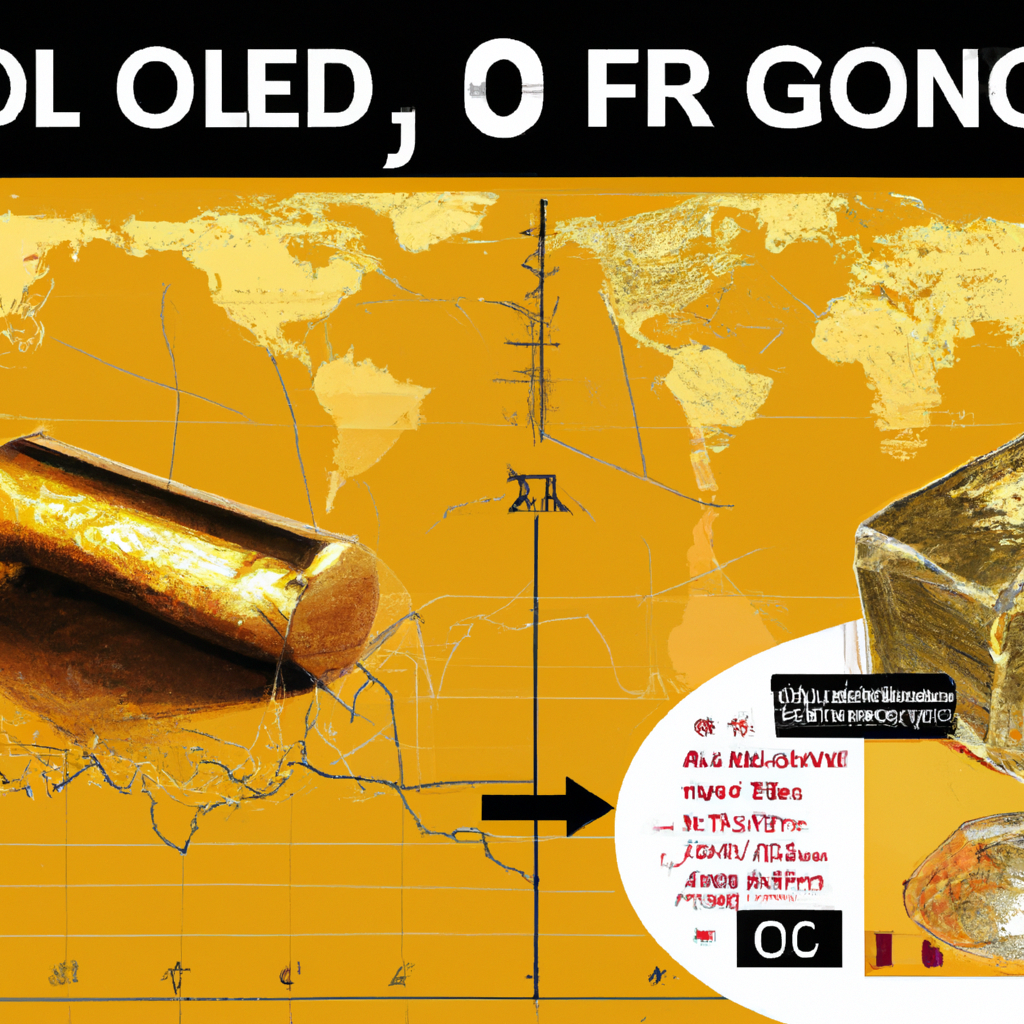Are you considering investing in gold during an economic downturn? It’s a tempting choice, with gold being traditionally seen as a safe haven in times of uncertainty. However, before you make any decisions, it’s important to fully understand the risks involved. In this article, we’ll explore the potential downsides of investing in gold during economic downturns, providing you with valuable insights and information to help you make informed investment choices. Whether you’re a seasoned investor or new to the world of gold investment, this article will give you the knowledge you need to navigate the risks and opportunities during economic downturns.

Fluctuating Gold Prices
Investing in gold during economic downturns can be both tempting and risky. One of the main risks associated with gold investments is the fluctuation of gold prices. During economic downturns, gold prices can experience significant volatility, leading to uncertainty in the market.
Impact of Economic Downturn on Gold Prices
Economic downturns often lead to a decrease in consumer spending and a decrease in overall economic activity. This can have a direct impact on gold prices. When the economy is struggling, investors may flock to gold as a safe haven asset, driving up its price. However, if the economic situation improves or market sentiment changes, gold prices can quickly decline.
Volatility and Uncertainty
The fluctuation of gold prices during economic downturns can create an environment of volatility and uncertainty for investors. The swings in gold prices can make it difficult to accurately predict and time investments. This volatility can result in potential losses for investors if they are not able to navigate the market effectively.
Gold as a Safe Haven Asset
While gold is often seen as a safe haven asset during economic downturns, it is important to note that it is not without risks. While it may offer some stability and protection during uncertain times, it is not immune to market forces. Investors should carefully evaluate their risk tolerance and investment objectives before considering gold as a safe haven asset.
Liquidity Constraints
Investing in gold can also present liquidity constraints, particularly during economic downturns.
Difficulty in Converting Gold to Cash
One of the main challenges with gold investments is the difficulty in converting gold into cash. While gold is a highly liquid asset, it may not be as easily convertible to cash as other investments. During economic downturns, when cash may be needed urgently, selling gold and obtaining the desired amount of cash may not be as straightforward or quick as anticipated.
Inability to Meet Immediate Financial Obligations
The lack of liquidity in gold investments can hinder an investor’s ability to meet immediate financial obligations. If an investor needs access to cash quickly during an economic downturn, relying solely on gold investments may not provide the necessary liquidity. This can result in financial stress and potentially force the investor to sell their gold at a less favorable price.
Counterparty Risk
Investing in gold also exposes investors to counterparty risk, particularly in gold trading and storage.
Risk in Gold Trading and Storage
Engaging in gold trading activities involves entering into agreements with counterparties, which can expose investors to counterparty risk. The counterparty risk arises when the other party fails to honor their obligations. During economic downturns, the financial health of traders and storage providers may be compromised, leading to potential losses for investors.
Fraudulent Activities and Scams
Gold investments, especially those involving online platforms or unknown entities, can be susceptible to fraudulent activities and scams. Investors need to exercise caution and conduct thorough due diligence to minimize the potential risk of being a victim of scams. Economic downturns can exacerbate these risks as fraudsters may exploit the increased market uncertainty and fear.
Inflation and Interest Rates
Inflation and interest rates play a significant role in determining gold prices during economic downturns.
Inflationary Pressures and Gold Prices
During economic downturns, inflationary pressures may arise as governments implement measures to stimulate the economy. Inflation erodes the purchasing power of currency, making gold an attractive hedge against inflation. As investors seek protection from inflationary risks during economic downturns, the demand for gold may increase, driving up its prices.
Impact of Interest Rates on Gold
Interest rates also impact gold prices during economic downturns. Central banks often reduce interest rates during economic downturns to stimulate borrowing and spending. Lower interest rates make non-yielding assets like gold more attractive, leading to increased demand and potentially higher prices. Conversely, if interest rates were to rise during an economic downturn, the attractiveness of gold as an investment may decrease.

Cost of Storage and Insurance
Investing in gold requires careful consideration of the associated costs, including storage and insurance expenses.
Safekeeping Costs
Storing physical gold securely can come with significant costs. Investors need to consider storage fees, which can vary depending on the method of storage chosen. Whether it is in a bank vault, a safe deposit box, or a specialized storage facility, these storage costs can impact the overall returns on gold investments, particularly during extended economic downturns.
Insurance Expenses
Insurance is crucial for protecting gold investments from potential theft, damage, or loss. However, insurance expenses can add to the overall cost of investing in gold. During economic downturns, when the risk of theft or loss may be heightened, insurance premiums may increase. Investors must factor in these additional costs when evaluating the potential returns of their gold investments.
Market Manipulation
The gold market is not immune to manipulation, and economic downturns can exacerbate this risk.
Price Manipulation by Large Players
Large players in the gold market, such as banks and financial institutions, have the potential to manipulate gold prices. During economic downturns, market conditions may be more susceptible to manipulation as fear and uncertainty grip investors. This manipulation can lead to significant price distortions, making it challenging for individual investors to make informed decisions.
Regulatory Measures to Curb Manipulation
Regulators have implemented measures to address market manipulation in the gold market. However, the effectiveness of these measures in preventing manipulation during economic downturns is an ongoing challenge. Investors need to be aware of the potential risks and stay up-to-date with regulatory developments to safeguard their interests.

Geopolitical Factors
Geopolitical factors can have a direct impact on gold prices, especially during economic downturns.
Impact of Political Instability
Political instability can disrupt economies and financial markets, leading investors to seek refuge in gold. Economic downturns often coincide with political uncertainty, as governments grapple with various challenges. The perceived stability of gold during these periods may drive up its demand and prices.
Trade Wars and Tariffs
Trade wars and the imposition of tariffs can create economic uncertainties and negatively impact global trade. These events can raise concerns among investors and prompt them to allocate funds to safe haven assets like gold. During economic downturns exacerbated by trade wars and tariffs, gold may serve as a hedge against the potential negative impacts on markets and currencies.
Currency Risk
Investing in gold exposes investors to currency risk, particularly during economic downturns.
Gold as an Alternative Currency
Gold has historically been considered a store of value and a hedge against currency risk. During economic downturns, when the value of currencies may become volatile, gold can act as an alternative currency. However, fluctuations in currency exchange rates can still impact the value of gold investments, especially for investors based in other countries.
Exchange Rates and Gold Prices
Exchange rates play a crucial role in determining gold prices for international investors. Fluctuations in exchange rates during economic downturns can impact the value of gold investments in different currencies. Investors need to account for currency risk and monitor exchange rates to assess the potential returns of their gold investments.

Diversification Challenges
Diversification is an essential risk management strategy, but it can be challenging to achieve during economic downturns with gold investments.
Limited Diversification during Economic Downturns
Economic downturns often affect multiple asset classes simultaneously, making it difficult to achieve meaningful diversification. While gold may provide some diversification benefits during economic downturns, it may not entirely offset losses in other investment classes. Investors need to carefully consider their overall portfolio strategy and diversification goals in light of the unique challenges posed by economic downturns.
Asset Allocation Strategies
Investors should consider adopting strategic asset allocation strategies that incorporate gold investments as part of a diversified portfolio. This approach helps spread risk across different asset classes and can mitigate some of the risks associated with gold investments during economic downturns. Consulting with a financial advisor or wealth manager can provide valuable insights into developing effective asset allocation strategies.
Exiting Gold Investments
Exiting gold investments during economic downturns requires careful consideration of timing and market liquidity.
Timing the Exit Strategy
Timing is crucial when deciding to exit gold investments during economic downturns. Trying to time the market perfectly can be challenging, as gold prices can be highly volatile. Investors should carefully monitor market conditions, consider their investment objectives, and make informed decisions about when to exit their gold positions based on their individual circumstances.
Market Liquidity and Selling Pressure
Economic downturns can result in decreased market liquidity, which can impact the ability to sell gold investments quickly and at desired prices. When numerous investors attempt to sell gold simultaneously due to economic uncertainties, it can create selling pressure, potentially pushing down gold prices further. It is important to be mindful of these challenges and plan an exit strategy accordingly.
In conclusion, investing in gold during economic downturns carries its fair share of risks. The fluctuation of gold prices, liquidity constraints, counterparty risk, inflation and interest rates, the cost of storage and insurance, market manipulation, geopolitical factors, currency risk, diversification challenges, and exiting gold investments all present unique challenges for investors. It is crucial for individuals considering gold investments to thoroughly understand these risks and seek professional advice to make informed decisions that align with their investment goals and risk tolerance levels.






